Our
Approach

Science
Targeting the underlying metabolic dysfunction in neurological conditions to improve lives of patients
Science
Changes in brain metabolism can result in neurological disorders. This can manifest as cognitive impairment due to neurodegenerative processes such as in Alzheimer’s disease and other dementias, or increased excitability of neurons leading to seizures in kids and adults, as well as headaches and migraine. Addressing this metabolic dysfunction can help unlock a novel platform to manage & treat neurological conditions & slow the progress of many conditions.
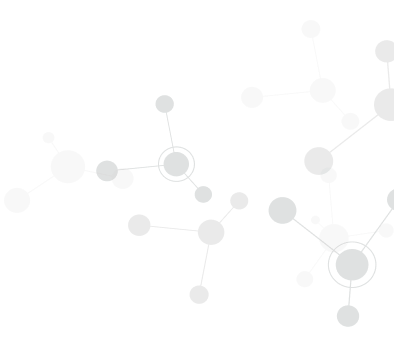
Our Approach
The induction of ketosis
Tricaprilin is an investigational oral drug that, in normal dietary conditions, is believed to mimic ketosis after administration. Ketone bodies are normally produced by the body under conditions of low glucose availability, such as fasting or low carbohydrate intake and function as an alternative to glucose. In many neurological conditions, ketosis has been shown to benefit many conditions by not only providing an alternate energy substrate but also through signaling pathways. Evidence for this approach exists through the use of ketogenic diet and role of fasting, both of which induce ketosis, in treating neurological conditions, and our lead product tricaprilin leverages this through a novel mechanism of action.
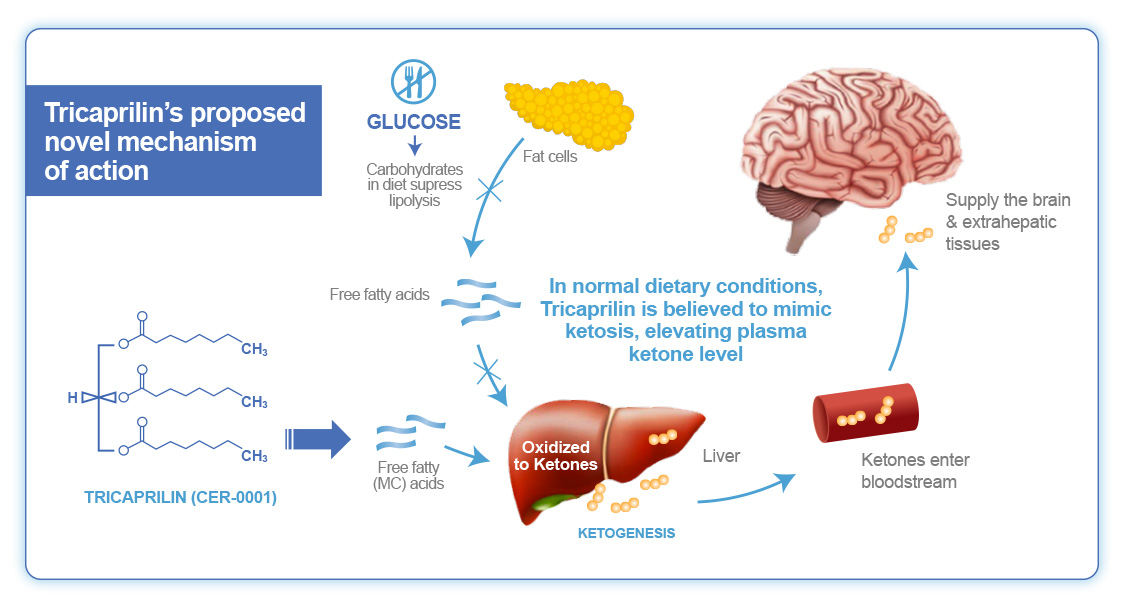
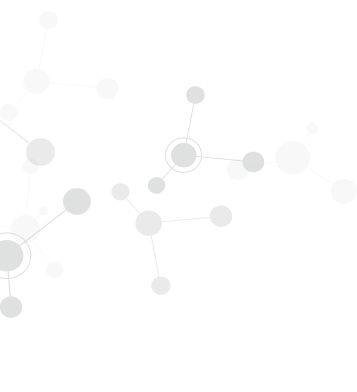
Ketosis in Alzheimer's disease
Alzheimer’s disease is characterized by regional declines in cerebral metabolism. Cerecin is investigating whether tricaprilin, through exogenous induction of ketone bodies, can provide an alternative fuel source for these metabolically compromised areas of the brain.
Decades of research measuring glucose metabolism in AD subjects by a variety of techniques have found reductions in regional brain glucose uptake in AD. Declines in glucose uptake follow a distinct pattern that is evident in the parietal and temporal cortices and posterior cingulate and much less present in the occipital cortex and cerebellum. The parieto-temporal pattern is specific to AD and differs from other forms of dementia and normal aging. In the presence of disturbed glucose uptake affected regions of the AD brain may be unable to produce sufficient adenosine triphosphate (ATP) for proper function. Cerebral glucose hypometabolism may give rise to some of the characteristic pathology of AD and play a causative role in the disease process itself, making it an attractive target.
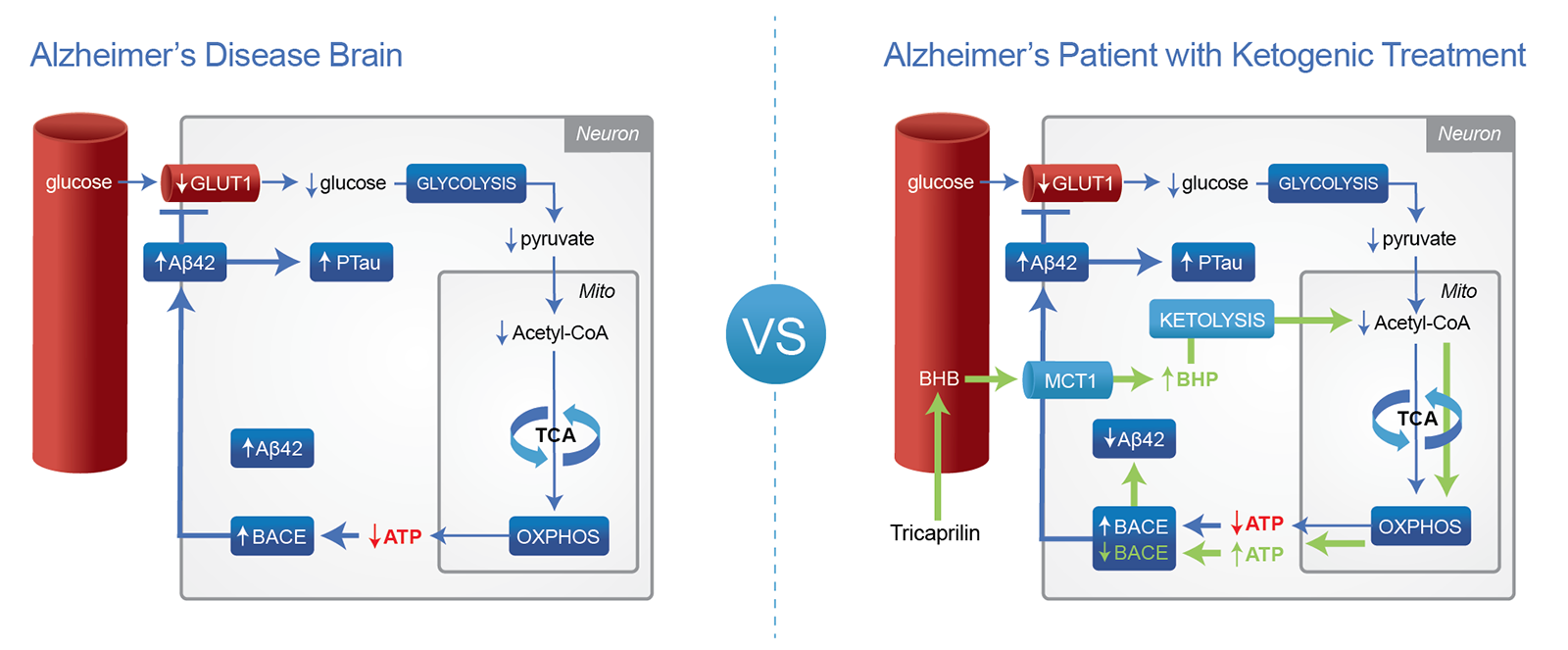

Ketosis in Migraine
Migraine is characterized by low metabolic potential. Low energy potential in migraineurs put them at risk of running into an energy crisis if neurons are placed under high demand. Low rates of glycolysis lead to low levels of pyruvate and acetyl-CoA resulting in low ATP production. Energy deficits generate oxidative stress and inflammation, triggering release of CGRP. Elevated CGRP levels contribute to the initiation of migraine.
Cerecin is investigating whether tricaprilin, through exogenous induction of ketone bodies, can provide an alternative fuel source for these metabolically compromised neuronal cells and reduce energy strain and downstream oxidative stress and inflammation.
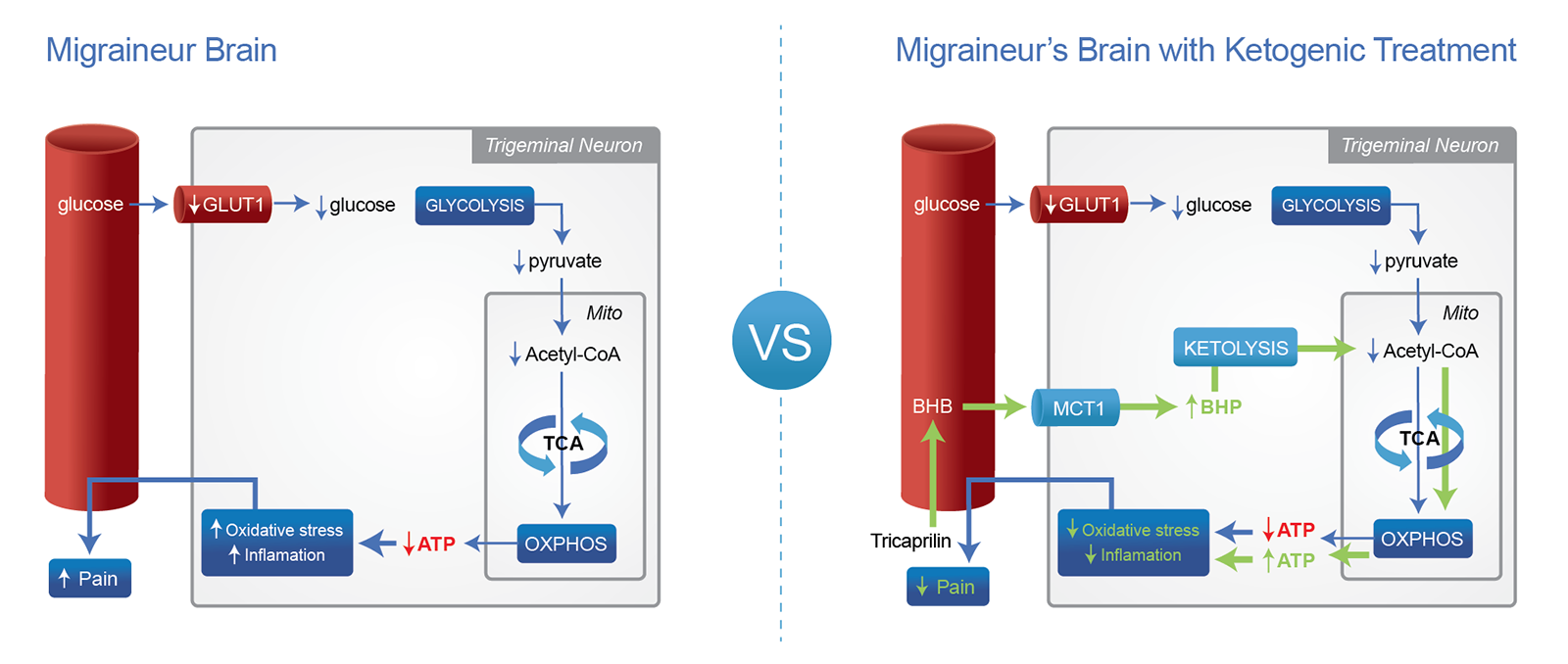

Ketosis in Infantile Spasms & pediatric epilepsies
Ketogenic diets have been used for decades to treat a variety of seizure disorders including different pediatric epilepsies and infantile spasms (IS), otherwise known as West syndrome. Yet, despite a great deal of work in this area, the precise mechanisms underlying the ketogenic diet’s clinical effects in such a wide array of seizure disorders remain unclear. One hypothesis is that ketone bodies (BHB, acetoacetate, and acetone) produced by the liver are directly responsible for the ketogenic diet’s anti-seizure profile effects. The mechanism by which ketone bodies could reduce seizure frequency in such a wide variety of conditions may be related to their varied actions, such as including stabilization of mitochondria, altering neurotransmitter systems, altering gene regulation, and anti-inflammatory effects.